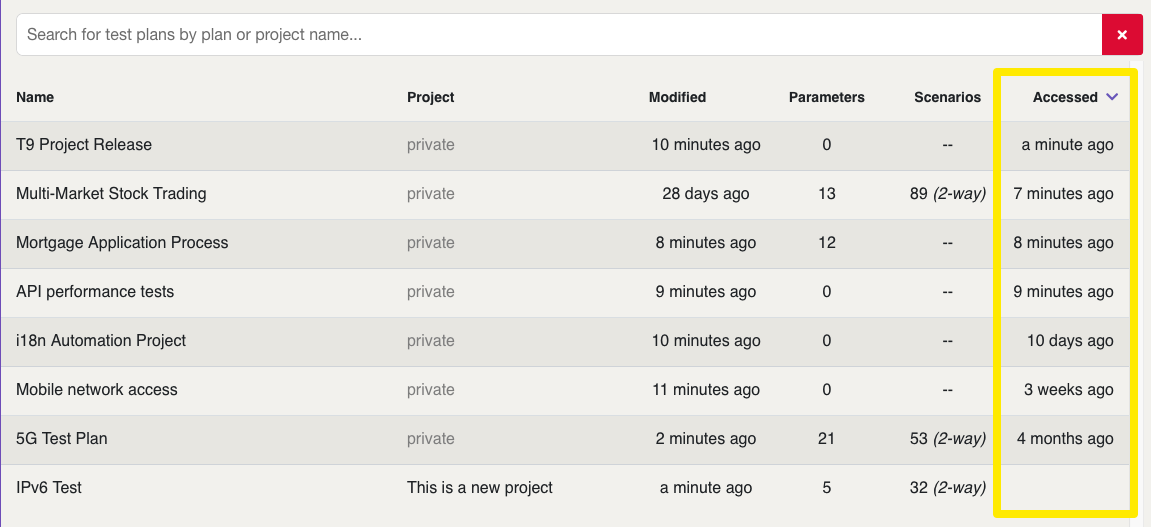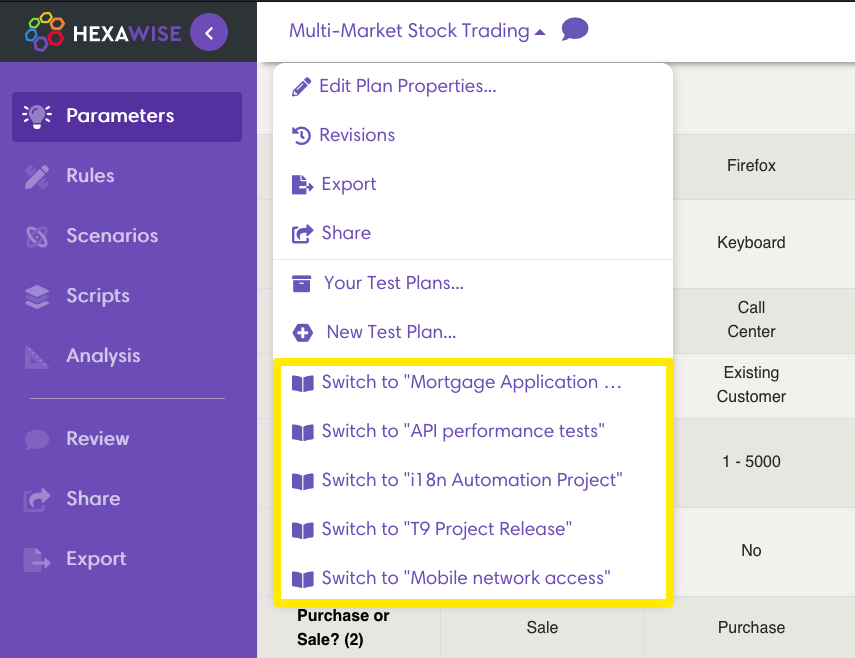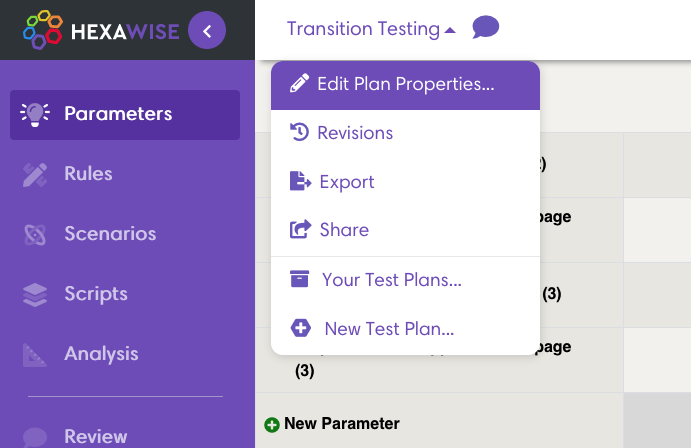Hexawise recent updates
Hexawise recent updates
Automate: Gherkin sample script
We made it more apparent when you just have initial, unsaved, sample Gherkin text in Hexawise Automate using a yellow explainer bar.
Support documentation and channels for learning more about Hexawise
We are continuously expanding our support documentation and channels for learning more about Hexawise.
Some of the more recent articles include:
- Toolchain integration with the example of Jira and Xray
- Guidance around Advanced Constraints
- Guidance around Expected Results
- Cross-industry success stories
We encourage you to keep track of these Recent Updates, and engage with us on LinkedIn as well.
Special character encoding in bulk edit
Certain special characters would show up as Unicode encoded, rather than as the Unicode character, when editing parameters using bulk edit. This is now resolved.
Automate: Keyboard and mouse interaction with parameter value selection
When entering a { for parameter value selection in a Gherkin Automate script, if you then interacted with the resulting parameter name auto-complete drop down using the mouse, rather than using the keyboard, you would't get a subsequent parameter value auto-complete drop down after selecting the parameter. Now you do with either data entry method.
Hexawise Foundations Certification
We strongly encourage you to invest an hour in earning a Hexawise Foundations certification.
To use Hexawise well, you need to understand, and apply a few important test design concepts and principles. The Hexawise Foundations certification course is the fastest way to learn these skills.
The course is available to all Hexawise users after you login to Hexawise. Click on the "Certification" tab in the bottom right of the post-login landing page, or on any screen you can click the course icon in the top right of your logged in Hexawise screen, to the left of your name.
Forced interactions import file, headers
The import of forced interactions from a file into a plan was sensitive to the formatting of the headers, and it should not be. This was resolved.
Performance for users with an extremely large number of plans
It won't be noticed by most people, but if you happen to have an extremely large number of plans (many hundreds) you'll notice a much snappier initial load of Hexawise.
Parameter order in dropdown of expected results of manual auto-scripts
The drop down order is now consistent with the order of the parameters in the plan, rather than alphabetical.
Display and sort by recently accessed plans
You can know see when you most recently accessed your test plans, and you can sort by the same.

Fast plan switching
Your 5 most recently accessed test plans are now available under the test plan drop down when you are in a test plan. This enables you to quickly switch between them or open them in a new tab.

Clear manual auto-scripts
In the old UI, when you had more than 3 steps in your manual auto-scripts you had the option to start over and remove all the steps in a single bulk operation rather than deleting all the steps one-by-one. We lost this functionality in the new UI, but now it's back.
Frozen scenarios, bring back the blue ice!
In the old UI, frozen scenarios would be shown with an icy blue background in the table of scenarios. We lost the coloring in the new UI, but now it's back. Thank you to user Dorothy for pointing out this omission.
Description of mixed-strength scenarios in revisions
When describing the number of scenarios in mixed-strength tests, the revisions UI used the (internal) term, -1 rather than mixed-strength as the strength indicator.
Requirements → Forced Interactions
During the terminology change over from "Requirements" to "Forced Interactions" we missed a few instances of the old term in more obscure parts of the user interface. These have now all been changed over.
Our internal CI / CD pipeline
We normally don't comment on these type of DevSecOps improvements here since they don't directly impact you as a user of the tool, but since we are all involved in the software development life-cycle in our respective teams, I thought it might be interesting to mention that we moved from a cloud-hosted Jenkins server and AWS CodeBuild as our CI/CD pipeline to GitHub Actions to power our CI/CD pipeline.
The benefit here is a bit over-determined, as a result of the move we have better pipeline performance, stability and reliability, and reduced costs.
As a potentially interesting addendum, "CI/CD pipeline" has become a generic term that is often used to describe just continuous integration, but here at Hexawise our pipeline is a full CI/CD pipeline and we do continuous deployment as well.
Safari: Bulk edit toggle
The toggle between single and bulk parameter editing had a layout issue in the Safari browser. This is resolved.
Parameter name truncation
Very long parameter names, longer than about 3 lines, are now middle truncated in the user interface for defining parameters.
Handling of long expected outcomes when displaying scenarios
A very long expected outcome would case some wrapping during the display of generated scenarios. This is now resolved.
Efficient plan navigation
Hexawise remembers which screen of Rules, Scripts and Review that you last accessed for a plan, and returns you to that most recently accessed screen on navigation back to those sections leading to more efficient navigation around a plan.
Improved some low contrast link colors
Some links to actions in constraints and revisions were low contrast and hard to see/read. These have been fixed.
Edit Plan Properties dialog
It was tricky to get to a plan's properties to update them when the plan was already open. We've addressed that with a new option in the plan name drop down.

Multi-strength warning
There is a warning explanation in the user interface when generating multi-strength scenarios, and not choosing a sufficient number of parameters for the selected strength. There was a regression in this warning state so that it did not allow you to continue on and correct the issue. This has been resolved.
Focusing of notes data entry
Wherever possible and reasonable, the note data entry UI now has focus and is ready for immediate typing or editing of a note.
Confirmation on emailing an export
There is now a success confirmation when you email yourself a Hexawise export.
New Hexawise Introduction Video for New Users
New Hexawise users now get a new introduction video.